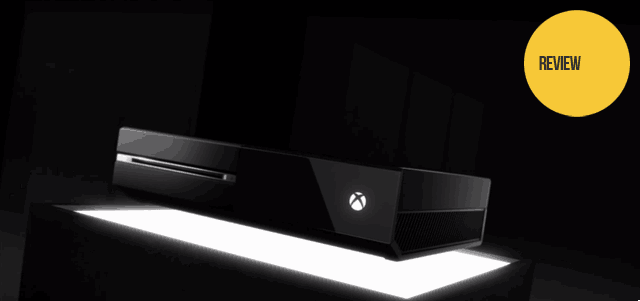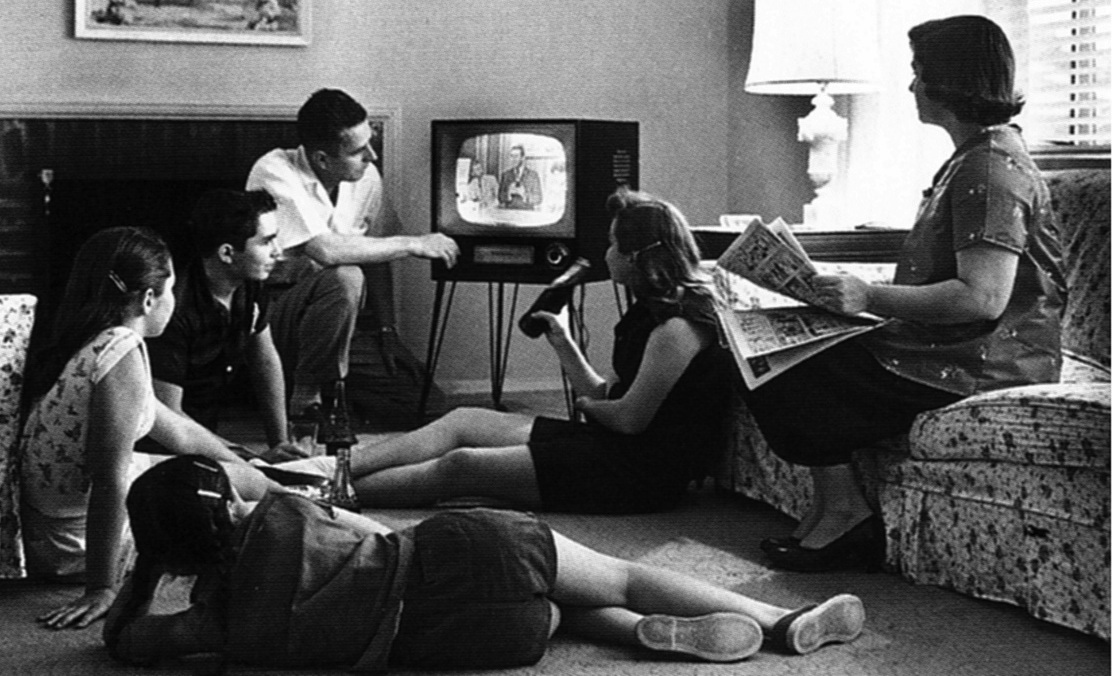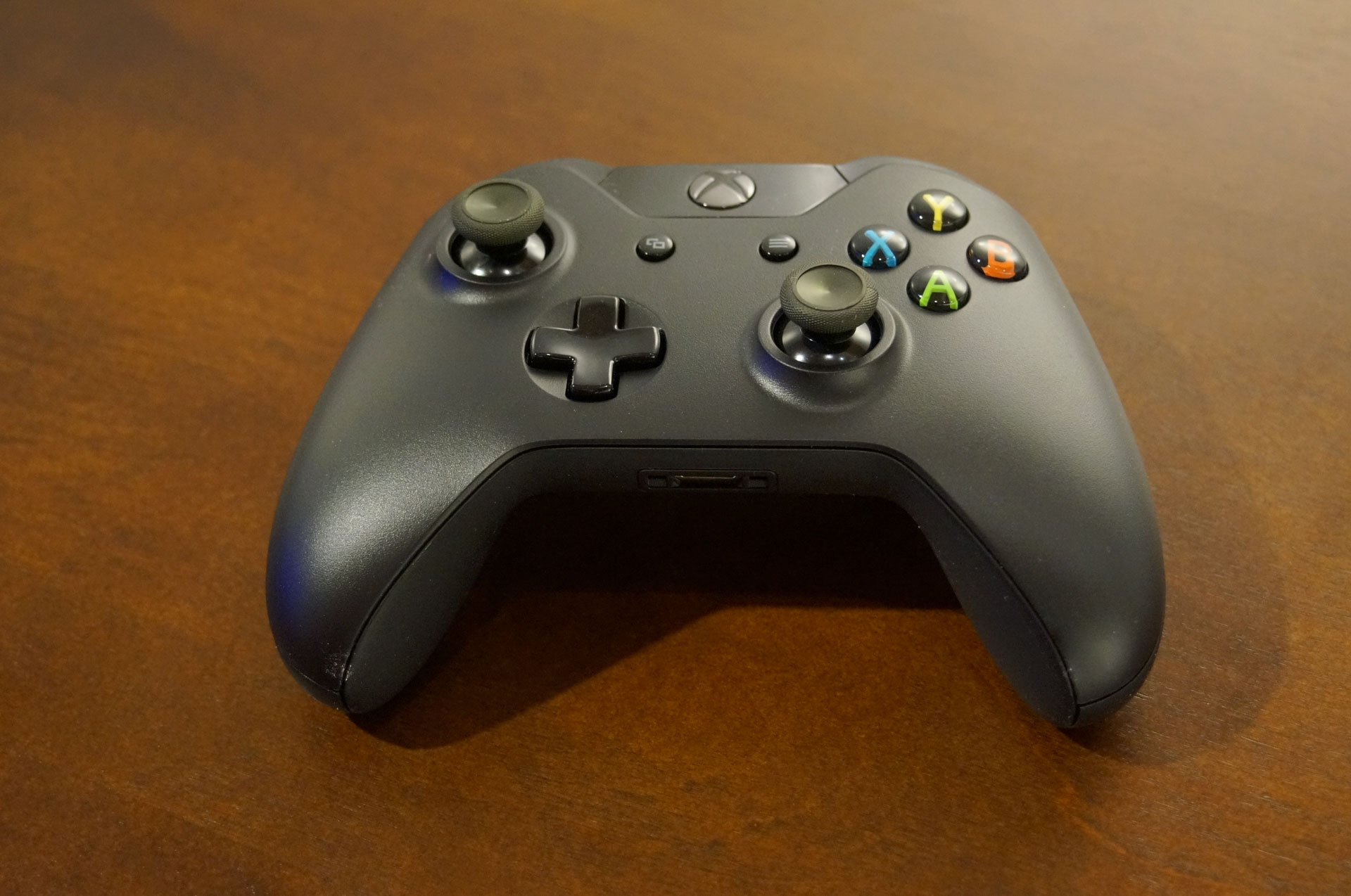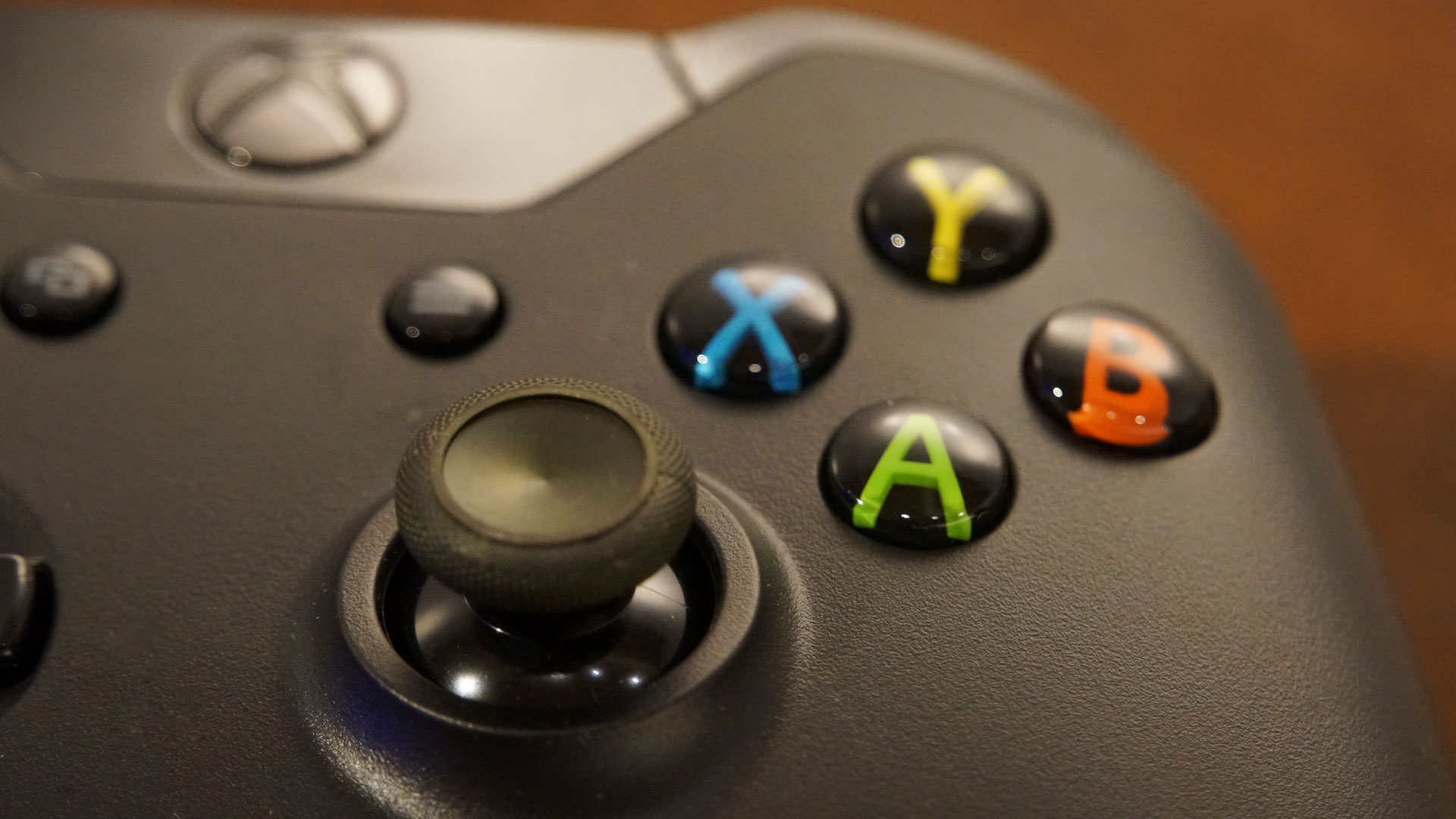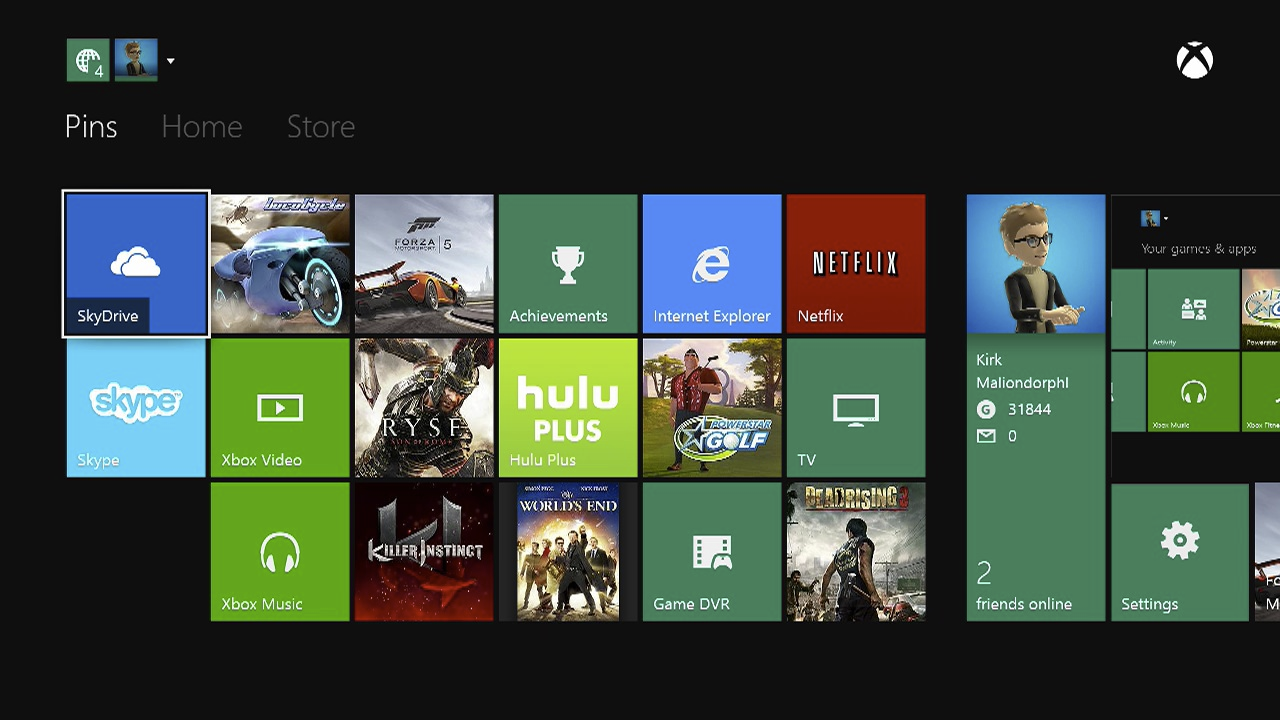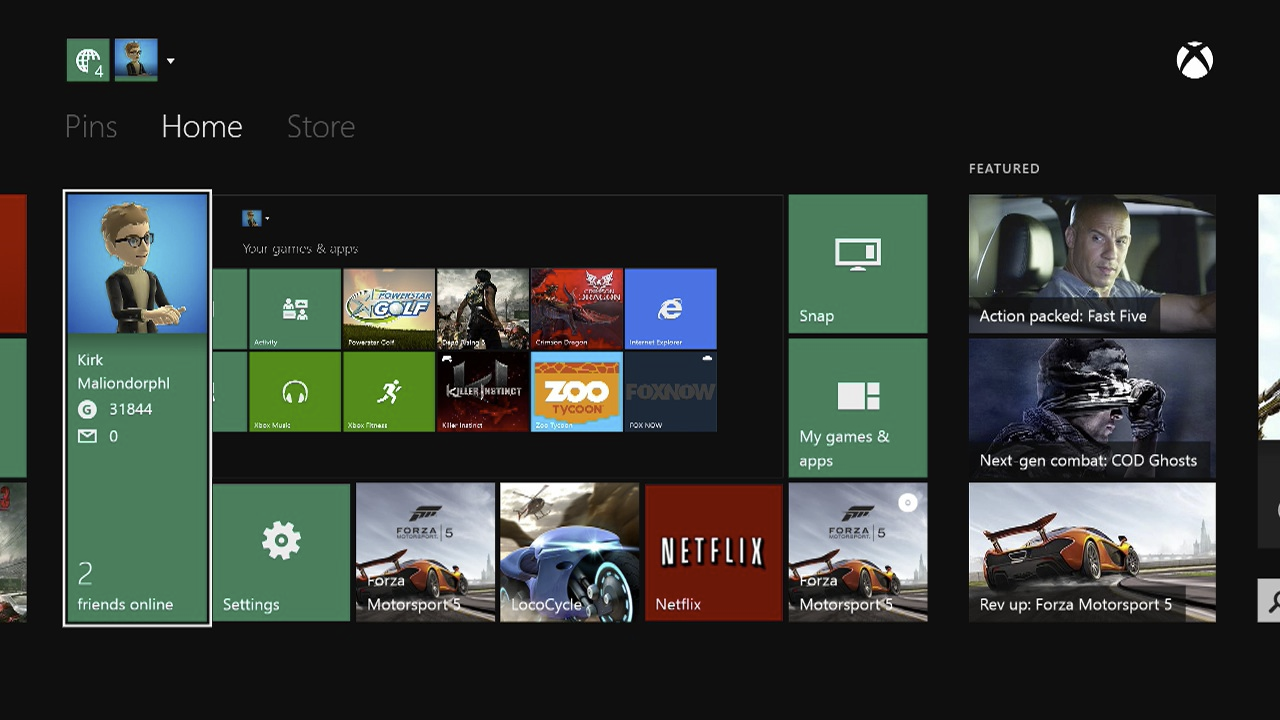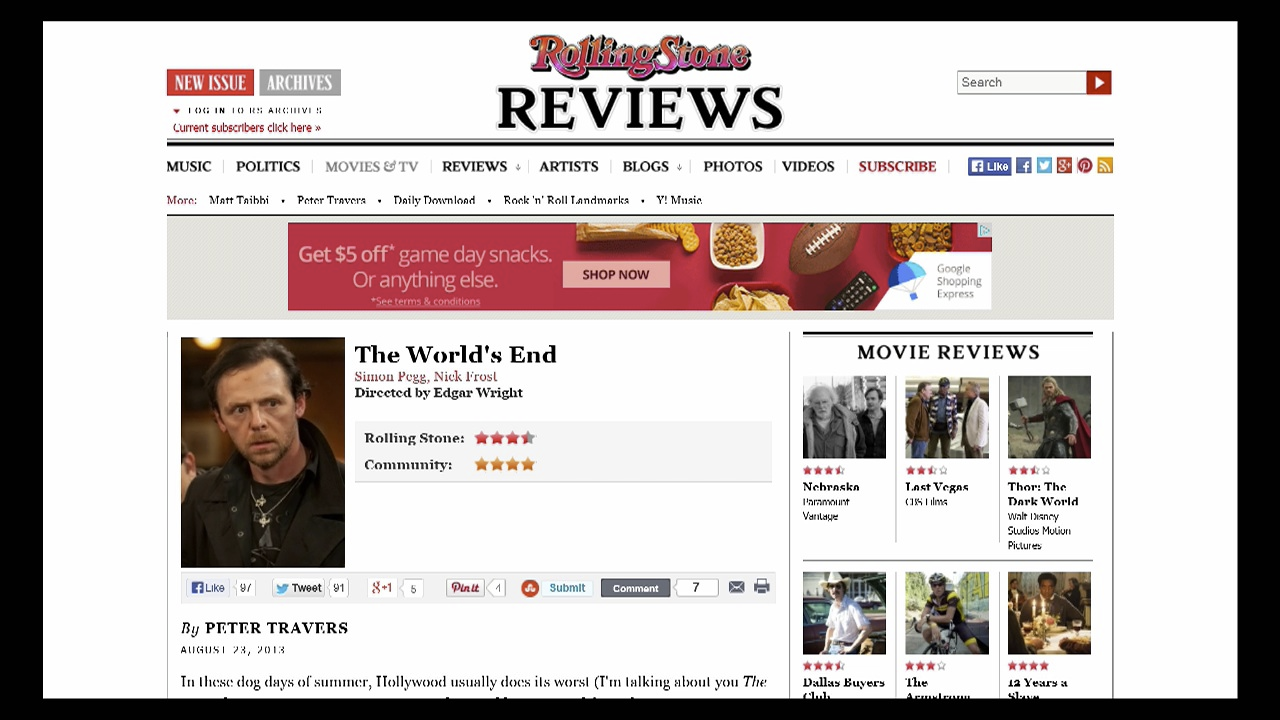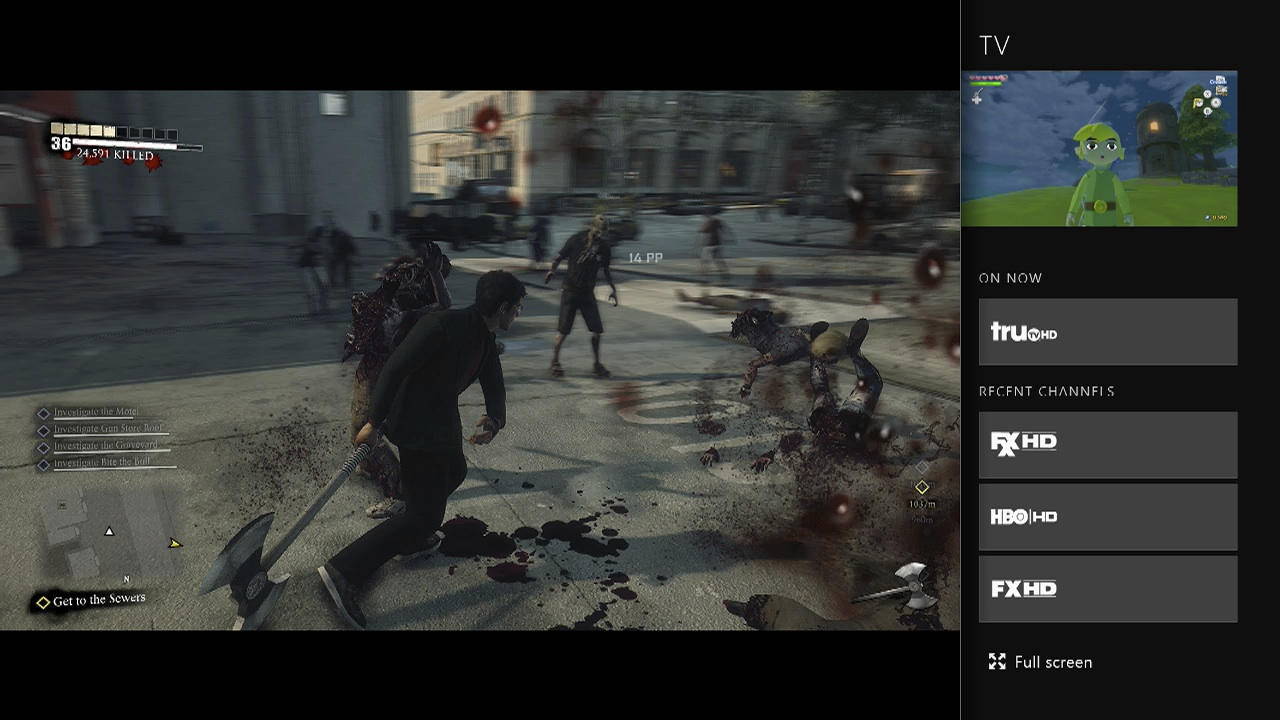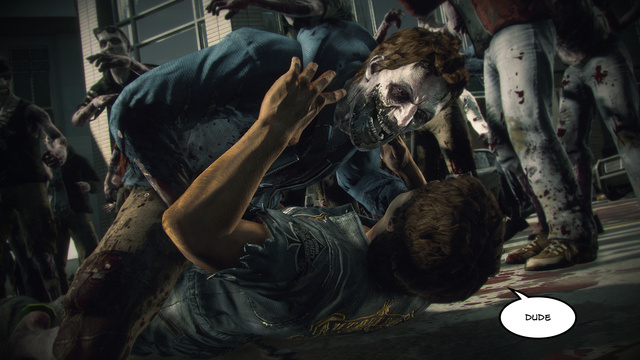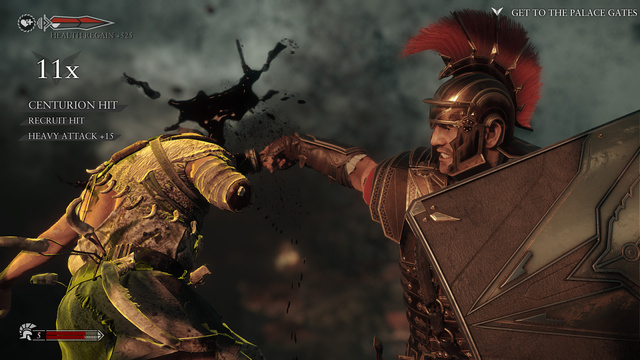The Xbox One is a testament to Microsoft's towering ambition. It represents their desire not only to occupy a place in your home entertainment center, but to lumber straight into the center of it. It is a black plastic tank, a hard-edged chunk of corners meant to conquer everything in its path. But for all its imposing physicality, it has a surprising number of weak spots.
Microsoft stumbled when announcing the Xbox One, betting that users would be okay with an always-online Xbox that blocked used game sales and required a Kinect motion camera to operate. But the gaming public was livid at the news, and eventually Microsoft relented, removing the console's Internet and Kinect requirements as well as its DRM.
Even before Microsoft officially revealed it, whispers were circulating that the console was behind schedule, and our sources told us that Microsoft was as many as six months behind in generating content for the Xbox One, then code-named "Durango." As the launch has drawn closer, we continued to hear from sources that the operating system and core software weren't ready, and that the system might be in for a rough launch.
The Xbox One I've been using for the past week and a half is significantly different from the Xbox One Microsoft announced back in May. The relatively short period of time Microsoft has had to make so many changes is evident in the console and its software. Xbox One is clearly coming in hot, and many of its features aren't quite complete.
How best to evaluate a work in progress? It ain't easy, and this is going to be a long review.
I've had access to a "Beta" Xbox One for the past one and a half weeks, and Microsoft representatives have repeatedly reminded me that the software I've been using isn't final. The system software has been regularly updated during my time with the machine, and there'll be one more update released in time for Friday, the day the console is released. The games will be updated, too. Everything will work better, they say.
In this review, I can only offer my impressions of what I've seen and what I've played. Bear in mind that the Xbox One's software probably will change. Some changes may arrive in time for launch, others in the months afterward. Bugs will be ironed out, new functionality will be added, current problems will be erased. Other, unexpected problems may crop up. In a year, the Xbox One operating system will likely be unrecognizable from the one inside the black box currently sitting under my TV.
But for now, after nearly two weeks with the console and multiple conversations with Microsoft about what their big black box can and can't do, I have a pretty good sense of the Xbox One that will go on sale this Friday.
Let me start with a metaphor. I know, I know. Metaphors are the worst. But it's a metaphor with dragons and action and unlikely heroes, so hopefully you'll forgive me. There's a mighty dragon, see, and he's pissed off and wreaking havoc all over the countryside, terrorizing the friendly populace of a small woodland town. Although he seems unstoppable, the dragon has one weakness: a tiny gap in his otherwise impenetrable armored skin. When the town's best bowman learns of it, he fires a fabled magic arrow straight into the dragon's weak point, felling the beast.
The Xbox One is that mighty dragon. Hear it roar! Microsoft's new device is not meant to merely join your living room entertainment center, it is meant to rule it. Thanks to its ability to both input and output HDMI audio and video, it can function as a mother brain linking your digital cable box, your AV receiver and your HDTV. Better yet, with its upgraded Kinect camera, you can control everything---your TV, your music, your streaming video---using only your voice.
"Kneel before my mighty voice-activation technology, and despair!" the Xbox One cries. "You cannot pierce my armor!"
Well, except for that weak spot. Or in the Xbox One's case, weak spots.
The Xbox One puts forth a bold new idea
At first glance, the Xbox One appears to be a gaming console much like the Xbox 360 before it. Physically bigger, I guess. But more or less the same.
It plugs into your TV using an HDMI cable and lets you play games, watch streaming media and play movies. But it also has an HDMI input, which is a whole new notion for a gaming console. The idea is that you'll plug your cable box into the Xbox One and, with a simple voice-command---Xbox, watch TV---you'll be able to watch television through the Xbox One. You can use your voice to change the channel---Xbox, watch HBO---or control your cable box's DVR---Xbox, pause.
It's a cool-as-heck idea, and on a basic level, it works. The cable TV functionality is slick, and you can snappily hop between whatever game you were playing and whatever's happening on television. But while my inner optimist hopes that Microsoft will eventually get the console working as precisely as they'd like, not everything fits into place as it should just yet. The hardware is sturdy but the software apparatus feels loose, incomplete.
All entertainment centers are different, and the Xbox One doesn't seem all that adaptable
The Xbox works well if you set it up exactly as Microsoft has intended, but minor deviations in your home theater setup can quickly throw things out of whack. If there's one thing I've learned from checking out other people's home entertainment rigs, it's that almost everyone's has some sort of minor deviation.
For example: The Xbox One has a built-in IR blaster that gives it the ability to control basic functions on your cable box, your TV and your AV receiver. Once you tell it the brand of your TV and audio receiver, it can double as a universal remote control. When you say "Xbox On," the console will power up and switch on the other two devices at the same time. The first time I used it, I felt like I was on the bridge of the Starship Enterprise or the Navigator.
Ah, but what if you're already playing a game on a different console, and your TV and AV receiver are already switched on? If you then say "Xbox On," the console will turn the TV off. That's because it's really just pressing the "power" button on your TV's remote---there's no way to tell it to only press the button if the TV is currently off. If you're anything like me, the first time that happens, you'll deactivate the feature and likely never re-activate it. Back to the remote control we go!
Those sorts of small issues begin to add up. The Xbox One is supposed to seamlessly integrate itself into our entertainment centers. If it doesn't, people will remove the console from its center-stage position and plug everything in separately, rendering one of the console's primary functions irrelevant.
Another example: The units we've been testing mess with the audio that comes from the cable box, and are currently only able to output surround sound if you dig into the menus and tick off a "Surround Sound (BETA)" option. Otherwise, it downmixes your cable's 5.1 surround to stereo. My boss Stephen Totilo likes to watch pro wrestling, and when he does, he likes to watch it in surround sound. (The better to hear the taunts and the body-slams, I guess.) But if he runs his cable box through his Xbox One, the audio comes through in mere stereo. Microsoft assures us that a non-beta option for surround audio throughput is coming, but it won't be there at launch.
If the device removes any functionality from the components it's supposed to unite, users will probably remove it from the equation
Or take my peculiar AV setup: I like to play games and watch movies with an Astro surround-sound headset, which decodes Dolby 5.1 audio from an optical input cable. However, the Xbox One is currently only able to output stereo and DTS Digital through its optical output. My headphone receiver can't read DTS Digital, so I have to output in stereo, and my surround headphones turn into regular old headphones. I've been asking Microsoft for the last week if they intend to add Dolby output to the optical audio port in the near future (it's an option for HDMI output), but haven't gotten a solid answer on whether a fix is coming.
Remember, Microsoft wants you to make this console your "one" device, to have it reign over your entertainment center and unify your living room. But if the device removes any functionality from the components it's supposed to unite, users will probably remove it from the equation and go back to plugging everything in separately. The fellowship will be broken, and the Xbox One will become just another gaming console.
It's important to say that all this TV stuff is all almost there. Every conversation I've had with Microsoft indicates that they will continue to update the software until everything is working better. After all, this is the same company that reinvented their Xbox 360 console multiple times over the last eight years using only software updates. I hope Microsoft can get the TV integration working more smoothly, because it's very cool in concept.
Now THAT is a big black box
Here's something I can tell you about with certainty: The Xbox One is a big-ass black box. As a physical object, the console is clean and imposing. It's all hard edges and bold lines, and is easily the largest rectangular non-TV device in my entertainment center. It looms over the PS3 Slim, the PS4 and the Xbox 360, and goes toe-to-toe with the original Xbox and the fat original PS3.
I like the Xbox One's clean-cornered, retro aesthetic, but it won't be for everyone. I'm not as wild about the size---in our age of shrinking digital boxes, the Xbox One feels like an anomalous space-hog. Microsoft's ambitions for the console are made physical: This box is designed to shoulder every other thing in your entertainment center out of the way. I'm not certain the Xbox One has earned its place atop my black-box pyramid just yet, but when it does, its presence will be known.
If a controller ain't broke, don't fix it
The Xbox One controller stays close to the design of the Xbox 360 controller. That's a good thing, since the Xbox 360 controller was a pretty great controller. The new controller has the same general sleep-mask shape, its thumbsticks are still offset and it still has a round "Xbox" button in the middle. The Start and Back buttons have been renamed Menu and View, but their functions change with each app. For most intents and purposes, they're the same two buttons. Overall, it's a smooth, sturdy piece of engineering.
With that said, a couple of the tweaks Microsoft has made to their controller design leave me scratching my head, dubious that they actually make the new controller better. Batteries have been pulled up into the controller's body; they no longer hang off the undercarriage like a fighter-jet fuel tank. It's an aesthetic improvement but can be an inconvenience---when my Xbox 360 controller's batteries were low, I'd often just snap out the battery pack and swap it with one of my other controllers, easy peasy. With the batteries placed inside of the Xbox One controller, swapping with another controller's batteries takes quite a bit longer. A small sacrifice in the name of streamlined design, but a sacrifice nonetheless.
The thumbsticks have been slightly elongated from the 360 controller, and they're enhanced with a rough, treaded edge around the top. The added height means that the player's thumbs will have a greater range of motion as compared to the 360 controller. I haven't yet noticed a tangible benefit to that, though I also haven't been able to thoroughly test first-person shooters like Call of Duty or Battlefield. Generally, I don't love the taller sticks--- they feel ungainly, like my thumbs are on stilts. Maybe I'll get used to them. It's too early to say.
Happily, the new D-pad is a substantial and unequivocal improvement. Microsoft has finally separated the four cardinal D-pad directions and made it easy to move your thumb between them. The new D-pad feels clicky and responsive, and I no longer worry that I'm accidentally hitting it at the wrong angle.
The Xbox One's triggers have been substantially widened and softened. They're less springy than the Xbox 360's triggers, and made several games---in particular the gunplay in Dead Rising 3 and Crimson Dragon---feel mushy. It's not love at first squeeze, but as with the thumbsticks, I'll have a better sense of them once I have a chance to live with them a while longer and play more games.
One cool addition: The Xbox One's triggers can each rumble independently down along the controller's grips, which allows some games to convey a surprising range of physical feedback. Forza's tires skid under your brake finger, Ryse's spears shudder under your grip. It's as-yet unclear whether multiplatform developers will bother to take advantage of the Xbox One's enhanced rumble, so it could well be that the feature will only turn up in Xbox One exclusives. It's cool, though, so here's hoping that more developers begin to program for it.
Annoyingly, the Xbox One controller can only accept proprietary headsets for chat, meaning that if you own a high-end, chat-enabled headset from a third-party company like Turtle Beach or Astro, you're going to have to wait until those companies or Microsoft make adapters for them. (First the lack of Dolby optical output, now this! The Xbox One doesn't appear to like my Astros.) The one-ear chat headset included with the Xbox One is serviceable, but it can't compete with the kinds of $100-300 headsets that audio-focused gamers will be loath to replace.
So. Some of the changes to the controller (the D-pad, the trigger rumble) are clear improvements. Some (the new battery location, the new headphone jack) are minor steps back. And on some (the longer thumbsticks and softer triggers), the jury's still out.
The Kinect is a neat idea that needs to work all of the time, not most of the time
Every Xbox One comes bundled with a chunky rectangular Kinect camera. Kinect is one of the Xbox one's primary selling points, and Microsoft hopes it will change the way you interact with your television. Place it above or below your TV screen and it will quickly scan your room, learn your identity, read your face and respond to your voice. It can detect your skeletal structure and even read your mood.
In theory, Kinect represents a fascinating and potentially revolutionary approach to how we interact with our home theaters. In practice, it's a generational improvement over its Xbox 360 predecessor but still has a ways to go.
First, the positive: When it works, Kinect is a showstopper. And it works most of the time. I sit down, and it sees me and almost immediately signs me in. "Hi, Kirk!" the Xbox says. I say, "Xbox, go to Ryse: Son of Rome," and the game snappily fires up. I play for a few minutes. In the middle of a level, I say, "Xbox, go home," and the console pauses the game and immediately pulls out to the home screen. From there, I can tell my Xbox to watch TV, or open up Netflix, or check out what my Xbox Live friends are doing online. All very neat.
But then, I'm into this kind of stuff. I love ambitious new gadgets and I forgive them when they don't work perfectly. I sense that for something like this to be fully embraced by the mainstream, it needs to work 100% of the time. The remote-control the Kinect means to replace works 100% of the time, after all.
After a couple weeks of testing in a couple of different rooms, I'd say the Xbox One's Kinect works about... 80-85% of the time. Not a terrible percentage, but not enough to call consistent, either. The camera mishears me frequently enough to be annoying. Each time I have to repeat myself---"Xbox. Xbox. Xbox go to Skype"---I'm that much closer to just ditching it and picking up the controller.
One of the Kinect's much-touted features is that it can quickly read QR codes, which will theoretically save players a ton of time when it comes to entering download codes and the like. But after trying on two separate Kinects, we couldn't get it to read QR codes off of phones, suggesting that it might only be able to read QR codes printed on paper. If you've got a printed QR code, the scanner works like some sort of black technological magic. It's amazing. But so many QR codes are digital these days that the need for a physical code could cripple a very useful functionality out of the gate. We'll keep trying with different codes and different phones and see if we can get it to work.
The Xbox One can recognize you, and you can set it to sign you into Xbox Live the moment it sees you. This is a terrific idea, particularly for families with multiple console users who all have different apps and saved settings. But in practice, the facial recognition is a touch inconsistent and sometimes annoying. Sometimes I'd have to rearrange myself in my room to get it to see me, which entirely defeats the point of an effortless, automatic sign-in. This morning, I sat down alone at my TV and for some reason the Kinect thought it saw my girlfriend somewhere in the room. She was not in the room. Another time, the camera recognized her when she came into the room and switched to her profile, forcing me to manually switch back in order to get access to my game-saves or pinned apps. I relayed that story to a Microsoft rep, who told me that my Xbox wasn't supposed to do that; it was a bug. So again, maybe that won't happen to anyone else. Or maybe it's a bug that'll linger for a while.
I'm not sure I really want to talk to my TV all day
Even supposing the Kinect worked flawlessly, it has a bigger, more fundamental hurdle to overcome. See... you have to talk to the thing. Out loud. Every single time you want it to do something.
I've already adopted a specific tone of voice I use when talking to the Kinect. I think of it as my "Kinect Voice." It's clear and it projects, sort of how I'd sternly tell a dog that he's been bad from across the room. My Kinect Voice is louder and clearer than my speaking voice, and it's... well, it's annoying. Say I'm sitting in a quiet living room with two other people, with my girlfriend working on her laptop and a visiting friend reading a magazine. I want to see if there are any new movies to rent, so I announce, "Xbox, go to video." Maybe it doesn't hear me. "Xbox." I say. "Xbox, go to video."
At this point, everyone in the room has looked up. I feel a bit on the spot and weirdly embarrassed. I really just want the damn thing to switch apps already. It's infrequent but noticeable moments like this that make me question whether voice control is really the wave of the future.
People, myself included, like the iPhone's voice control. I regularly use it to set timers and alarms and the like. But voice control isn't billed as the primary way to navigate the iPhone, and if it were, I doubt we'd be so keen on it. Particularly not if we had to shout to the phone from across the living room.
There's a similar problem with party chat. If you're playing a multiplayer game with friends, you can talk with them either by using the Xbox One's proprietary headset or by talking into the Kinect. (The former option offers much more clarity than the latter.) But if you want to easily activate most of the Xbox's functions, you're going to have to yell into the Kinect while still chatting with your friends. That means you'll have to either mute your microphone each time you issue a command or just shout your Kinect command into party chat. It's hard to be cool when you're shouting Kinect commands into party chat.
I've already gotten used to talking to my Xbox 360's Kinect to control video playback, but voice control is so fundamental to the Xbox One's design that I've found myself giving orders to the console much more regularly. A week and a half with the thing is enough to have me wondering: Do I really want this to be the primary way I interact with my entertainment center from now on? Am I going to be talking to my console at all hours of the day and night, sternly using my Kinect Voice at 2AM while the rest of the house is sleeping? Voice control certainly makes it easier to navigate the increasingly labyrinthine menu-options of a modern media center, but it sure does require you to make a lot of noise.
Do I really want this to be the primary way I interact with my entertainment center from now on?
There is one solution for those who want to use Kinect quietly. As with the Xbox 360 Kinect, you can interact with the Xbox One Kinect using gesture control. Unfortunately, the Kinect's gesture functionality is inconsistent at best. The camera is sluggish to respond and the gestures required to move from screen to screen are goofy and awkward. Across a couple of different living rooms, I have yet to get the Kinect to respond to my gestures in a consistent fashion. In one of the setups I tested, I'd be watching a movie while leaning back, feet in the air. The Kinect would regularly read my feet as my hands, suddenly pausing playback or switching apps.
While I've never had a lot of faith in the concept of camera-based gesture control, I'm ready to be convinced of the potential of voice control. And while its voice functionality is way out in front, the Xbox One Kinect hasn't yet convinced me either approach will be the way of the future.
It's also possible to do everything the Kinect does with just the controller, but it's a more arduous process. If you'd like to record a clip of your gameplay with Kinect, you can say, "Xbox, record that" to start the recorder. To do the same thing with the controller, you have to pause the game with the the home button, snap the Game DVR app to the side of the screen and start recording, then go back later and edit your clip to take out the part where you paused the game. (The bulk of the Xbox One's game recording functionality is not yet up and running, so we won't be able to issue a verdict on it until after the console launches.) Similarly, you can snap an app to the side of your screen simply by saying, "Xbox, snap Internet Explorer"... or you can pause the game with the home button, select the snap function, pick an app to snap, then double-tap the home button to return to the game. It works, but the Xbox One was clearly designed with voice control in mind.
Pause. Take a moment to read over that last paragraph. Kind of a mess, right? If ever a console needed a huge instruction manual loaded with flowcharts and button-maps, it's this one. The Xbox One may no longer require an internet connection or Kinect, but it damn near requires a butler or a tutor.
The operating system is full of squares
The box, the controller, the camera... none of that stuff matters much if the software controlling it isn't up to snuff. The Xbox One's operating system doesn't feel quite finished, but it's a decent start with a sturdy foundation.
The user interface reflects the angular design of the console itself. The home screen and operating system evoke Microsoft's Windows 8, a collection of squares and rectangles arranged in an aesthetically pleasing but sometimes difficult-to-read jumble.
The home screen exists at the middle of a three-part operating system that is arranged, from left to right: "Pins," "Home" and "Store." You can navigate between all three screens with your voice or with a controller, quickly moving through your game and app library, picking over Microsoft's video-on-demand service, or flipping through whatever games or programs you recently used.
The system lets you "pin" all sorts of apps to the left, which makes it very easy to keep your favorite stuff close at hand. In a neat touch, your entire home-screen layout, including your custom theme color, stays with your profile wherever it goes. When I log into a second Xbox One, my entire profile immediately pops up, no muss, no fuss. Hey, cool, it's all my stuff!
Let's break the homepage down. Here's the pin screen, which lives to the left of the home screen:
I've got Dead Rising 3 pinned, sure, but I also pinned the movie The World's End, because I want to rent it but haven't had time. Clicking the movie's pin will take me to the Xbox Video store page, where I can opt to rent it when I'm finally ready to watch. I do wish I could pin individual Netflix movies or series, but I guess we can hope that functionality may come in the future.
The bottom row of the front page consists of four rotating slots for your most recent games, with the lower-right square dedicated to the disc drive and the right-hand two slots locked on your game library and the snap multitasking feature, which immediately pulls up the snap sidebar.
On the right, three panes advertise content available on the Xbox Store, which you can access by flipping a few more squares to the right. The storefront is broken into four gigantic sections, and while it doesn't seem like the most constructive use of screen real-estate, it's at least nice-looking.
The store itself is awfully slick, and feels like a digital marketplace that's connected to the way we browse and buy media. For example, when pulling up a movie's page in the Xbox Video app, you'll be given the usual options to rent or buy it, or check out a trailer.
But you'll also have an embedded feed of the movie's Rotten Tomatoes page, with its Tomatometer rating at the top and pertinent reviews below. Select one of those reviews and internet explorer will open right up so you can read it.
Very cool. (And yes, when I finish writing this review, I'm going to celebrate by watching The World's End. I'm pretty psyched.)
It's worth noting that most of the Xbox One's apps (including Netflix), as well as multiplayer functionality for any of the console's games, require users to sign up for Xbox Live's Gold service, which goes for $60 a year in addition to whatever membership fees you pay for the services. Microsoft's done a good job of helping users organize all their content in one place, but it does sting a bit to pay a gatekeeper just to access content that's already been purchased elsewhere.
The operating system is missing a few small but noticeable features. The Xbox 360 made it possible to assign a thumbstick-inversion preference to each profile, but the Xbox One doesn't. I loved that feature, and I'm bummed that it's not included in the new console. Furthermore, it's currently impossible to get an overview of the Xbox One's storage space---how much space games and apps are taking up, how much room is remaining in the console's 500GB hard drive, that kind of thing. You can only manage your game installations by selecting individual games and opting to delete local content. It's a surprising oversight that contributes greatly to the operating system's overall feeling of impenetrability. Why on earth would Microsoft leave off such a basic, vital feature as disc management?
"Snap" split-screen multitasking might be cool at some point, but it's not there yet
The Xbox One's "snap" feature is a pure expression of the console's multitasking abilities. The ideal Xbox One multitasking scenario is as follows: You're watching a basketball game on TV and decide that you want to play one of your games, maybe Dead Rising 3. You say "Xbox, go to Dead Rising 3." The Xbox immediately switches from the TV feed to the game.
You play for a bit, then decide you want to check in on the game's score, so you say, "Xbox, snap TV." On the righthand side of the screen, a smaller version of your TV feed appears, letting you see what's going on in the game while continuing to play. (Or you can do what I did in the image above, and run your Wii U playing Wind Waker through the Xbox One's HDMI input.) Now that you checked in with the TV, you say "Xbox unsnap" and the TV goes away, returning the game to full screen.
You don't have to snap apps---you can also just switch between running them full screen, and most non-game apps will suspend in the background, waiting for you to come back to them. Here's a scenario that lines up more with the way I watch TV: I'm streaming a TV show on Netflix. I decide to pause and play a bit of a game. I tell the Kinect to switch apps, and it immediately pauses the Netflix show and starts up the game. Switch back, and my Netflix show can proceed uninterrupted.
It's the way we already interact with our computers and smartphones, so why not our game consoles? I really like that the Xbox One offers this kind of functionality, because it really is nice to be able to access so many apps and features while leaving your game paused. Other consoles like the Wii U, 3DS, Vita and PS4 all allow for multitasking, but the Xbox One is the first to keep multiple core games and apps running at the same time, and it's even able to display two things---say, a Netflix movie and a game---running at once. But like so many of the Xbox One's other cool ideas, multitasking feels unfinished and has a few significant problems.
For starters, there's snap functionality. While playing a game, say "Xbox Snap aplication," and the game will pause and a sidebar will pop up. Here's what happened when I snapped Internet Explorer over an in-progress game of Forza 5:
Neat idea. Unfortunately, the whole thing is sluggish and difficult to use. I've never seen a snapped app slow down a game, but sometimes the apps themselves ran with noticeable lag; as I entered a URL into Internet Explorer, the on-screen keypad moved a few split seconds behind my button presses. It's also very difficult to tell what the heck is possible in each snapped app, and some apps can't be snapped at all.
Most of the time when using the Xbox One, I switch between apps wholesale and skip snapping; it just doesn't feel intuitive or easy enough to use. It could be that as I get more used to it and Microsoft smooths out the transitions, it'll get easier to use. But for the time being, it's awfully clunky.
Another significant problem: If you snap music or a TV show over your in-progress game, you can't adjust the audio on either thing. I found that snapping a TV show over my game drowned out the game audio entirely, and I had no option to mute or unmute either of the two snapped applications. Microsoft says that snap automatically adjusts the audio to make the primary app louder, and that they're looking into how to allow people to control volume on their own. As it stands, the volume thing is a dealbreaker---I'd be happy to run a basketball game in the background while I play Assassin's Creed, but only if I can mute one or the other.
Multitasking is difficult to parse, and I can't tell which apps are currently running
If you're playing one game and switch to another one, the first game you were playing quits. There's no warning, no "You are about to quit this game, all unsaved progress will be lost. Proceed?" Nothing like that. It's unceremonious and immediate. If you want to get your roommate's goat, wait until he's about to win a race in Forza, then yell "Xbox! Go to Dead Rising 3!" The Xbox will immediately switch apps, and he'll lose all of his race progress. Yikes.
It's also possible to accidentally do that to yourself: At one point last weekend I told my Xbox One to "Go to Comedy Central." It heard that as "Go to LocoCycle" and immediately flipped to the new game, dropping my in-progress Dead Rising mission. This was partly user error---the correct command for the TV should've been "Xbox, watch Comedy Central." But that such a small mistake caused me to immediately lose my unsaved progress is a significant problem.
As is the case with hard drive management, it can be tough to get a sense of just what's going on underneath the Xbox One's multitasking hood. I'm never quite sure which apps are suspended and which ones have quit, nor can I tell what will happen if I open a new app. The Xbox One operating system lacks a bird's-eye view; there's no way to cycle through your currently running apps. As a result, switching from program to program is a touch disorienting, like feeling your way through a dark room without a clear sense of where you've been.
The potential is here for very cool stuff. I can easily imagine an Xbox One that can keep multiple games in saved states, similar to how a smartphone works. We'd switch from game to game, always returning to the moment when we left off. Or imagine you're watching a TV show and switching over to a game while the commercials run, keeping an eye on your muted TV feed in snap mode to see when the commercials are over. I wouldn't put it past Microsoft to engineer that kind of stuff into future versions of their operating system. While the execution's not quite there yet, the core ideas are solid.
The big games are good, the little ones less so
Console launches are notorious for lacking quality games. Happily, the Xbox One bucks this trend, offering three substantial launch exclusives that are all a good deal of fun to play. Less happily, some of the console's smaller downloadable games are disappointing, and don't quite fulfill their role as caulk in the spaces between the big games.
We'll have a more in-depth review of the Roman-themed action game Ryse: Son of Rome later in the week, but just based on what I've played at preview events, the game plays well (if a bit simply) and it looks gorgeous. It's the kind of game you'll want to break out to show off your new console, and it's nice that it takes place outside of the usual war/sci-fi/fantasy video game realms.
Forza Motorsport 5 is a quintessential Forza racing game; clean, elegant, with a terrific sense of speed and sharp 1080p, 60FPS graphics. Dead Rising 3 is the most beefy, enjoyable launch game of the lot---I went into greater detail in my review, but suffice to say, if you're getting an Xbox One, strongly consider picking it up.
The highest-profile of Microsoft's exclusive downloadable games---LocoCycle, Crimson Dragon---disappoint. Killer Instinct appears to be a pretty cool fighting game, though I haven't spent much time with it, nor have I had enough time to sufficiently critique Zoo Tycoon or Powerstar Golf.
My sense is that these games are all fine, and will please their niche audiences, but won't give most mainstream gamers a compelling reason to play. Then again, Peggle 2 arrives exclusively on the Xbox One in just a couple of weeks, and may well wind up being the mid-sized glue that holds the rest of the Xbox One launch library together.
Much has been made of the Xbox One's graphical prowess (or lack thereof), and the consensus seems to be that it is a little less powerful and more difficult for third parties to develop for than its direct next-gen competitor, the PlayStation 4. That could well mean that the Xbox One will get sub-par versions of games that are released on both systems.
I haven't yet had a chance to try any third-party games on Xbox One, as publishers didn't send copies in time for this review. So I can't yet say for certain how the Xbox One versions of Assassin's Creed IV, Call of Duty: Ghosts or Battlefield 4 run compared to their PS4 and PC counterparts. Rest assured that we'll have thorough coverage of myriad performance and graphics comparisons between the two consoles over the next couple of weeks.
My experience with multiplayer games on Xbox One is also limited. Stephen and I created a two-player party and worked through some Dead Rising 3 and Ryse: Son of Rome co-op with no issues, but it remains to be seen how the party- and multiplayer infrastructure will hold up once the console is released to the public and large groups of people begin playing games like Call of Duty and Battlefield. I'll update this review with more on the Xbox One's multiplayer once we've tested more games and seen how it all holds up in the wild.
Overall, the Xbox One's launch lineup of games is strong. It's got a superb graphical showcase in Ryse, an intricate open-world game in Dead Rising 3 and a beautiful racing game in Forza 5. All three are enjoyable and well-made, and none feel like they would've been possible on a last-gen console, albeit for different reasons.
The lineup may be strong for a console at launch, but the future, as always, is a question mark. We can expect Bungie's online shooter Destiny as well as Respawn's much-hyped robot shooting game Titanfall---the latter an Xbox One/360/PC exclusive---to arrive in the early months of next year. Ubisoft's promising-looking cross-platform action game Watch Dogs and their next-gen racing game The Crew come shortly thereafter.
Past that, know we're getting another Halo, SWERY's bizarre-looking D4, Capy Games' neat-sounding Below, and Remedy's mysterious Quantum Break. Those games will all arrive.... sometime, as well as other cross-platform games like Dragon Age III and Dying Light. It's likely that Microsoft is currently throwing around its considerable financial heft to line up exciting exclusive games for their console, but only time will tell how it'll pan out. As with any new console, buying an Xbox One at launch is an act of trust. Because the console isn't backwards compatible with the Xbox 360's vast library of games, that trust will need to be fairly substantial.
With great ambition comes a curious sort of precariousness. With so many interlocking parts, it only takes a small misfire to gum up the whole works. The Xbox One will doubtless sell hundreds of thousands of units in its first weeks on the market, and hundreds of thousands of people will plug it into their home entertainment centers. And so a hundred thousand town bowmen will let fly a hundred thousand arrows, and plenty of them will strike the mighty dragon's weak spots.
I admire what Microsoft is trying to do with the Xbox One, and I'm rooting for them to give their console that final push to get it to where it needs to be. The whole thing is almost there. The Kinect almost works well enough to get me to use it all the time. The TV integration is almost smooth enough to make me plug it into the heart of my living-room setup. Multitasking almost works well enough to get me checking the internet while I play games.
The skeptic in me says that while many technology manufacturers seem hell-bent on making the next great convergence device, technology tends to diverge. New devices are more likely to take on a role we didn't know we wanted (e.g. people now own a smartphone, a laptop and a tablet) instead of pulling together multiple roles we didn't realize could be combined. Successful convergence devices like the iPhone will forever inspire others to swim upstream, attempting to replicate a one-in-a-million success. Will our living rooms ever be governed by a single device? And if so, will that device be the Xbox One?
The Xbox One is trying some very cool new things, and it's launching alongside some very fun games. But there are so many rough edges, and the software feels incomplete. Do you need to have an Xbox One?
Note: This review will be updated throughout the coming weeks to ensure we've covered all the basics and adequately tested all the currently incomplete features with a growing Xbox One userbase. All Kotaku reviews that carry a "Not Yet" are intended to eventually end up as a "No" or "Yes". For a console, that will happen if/when the system either proves hopeless or winds up having some must-play, must-own games.


